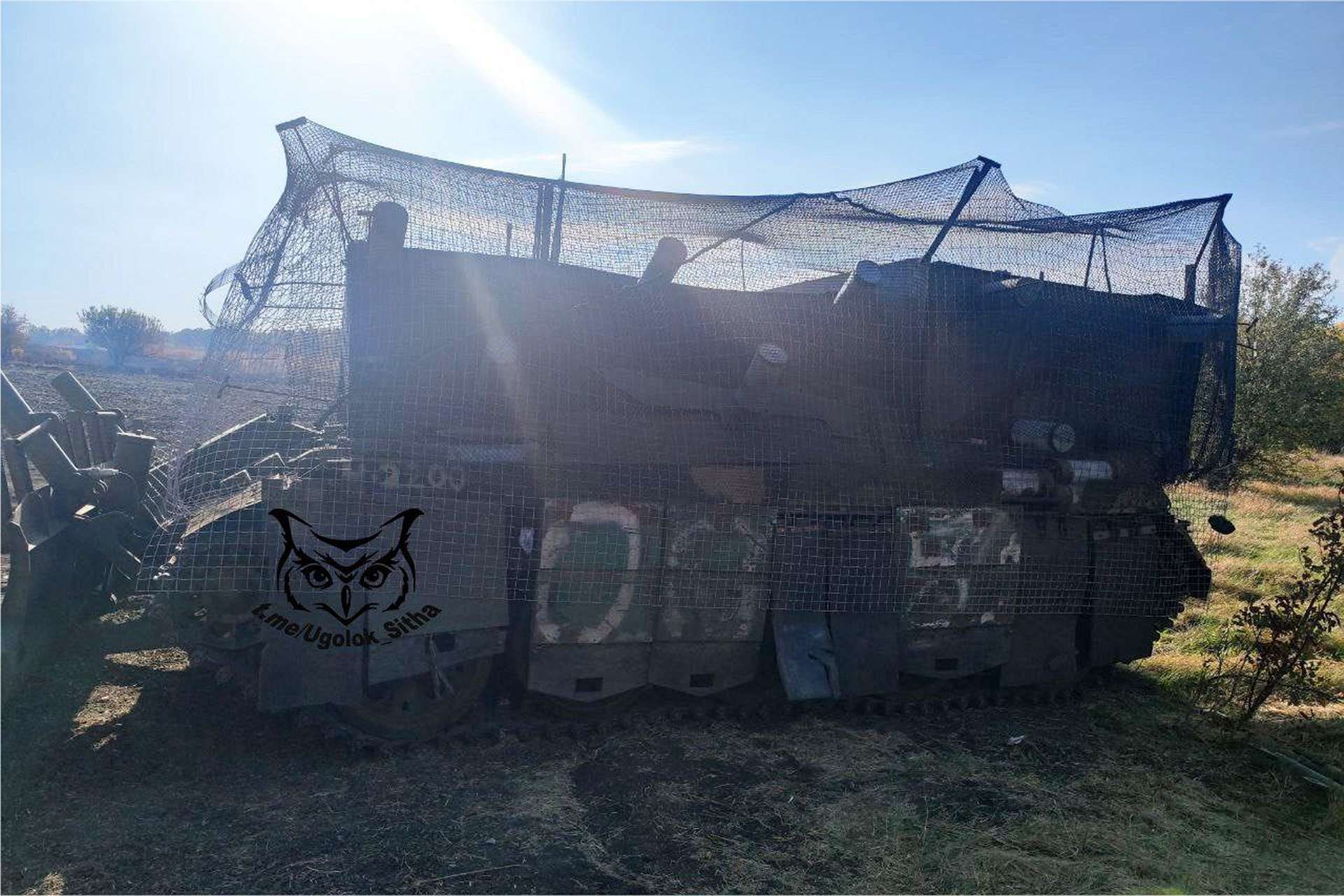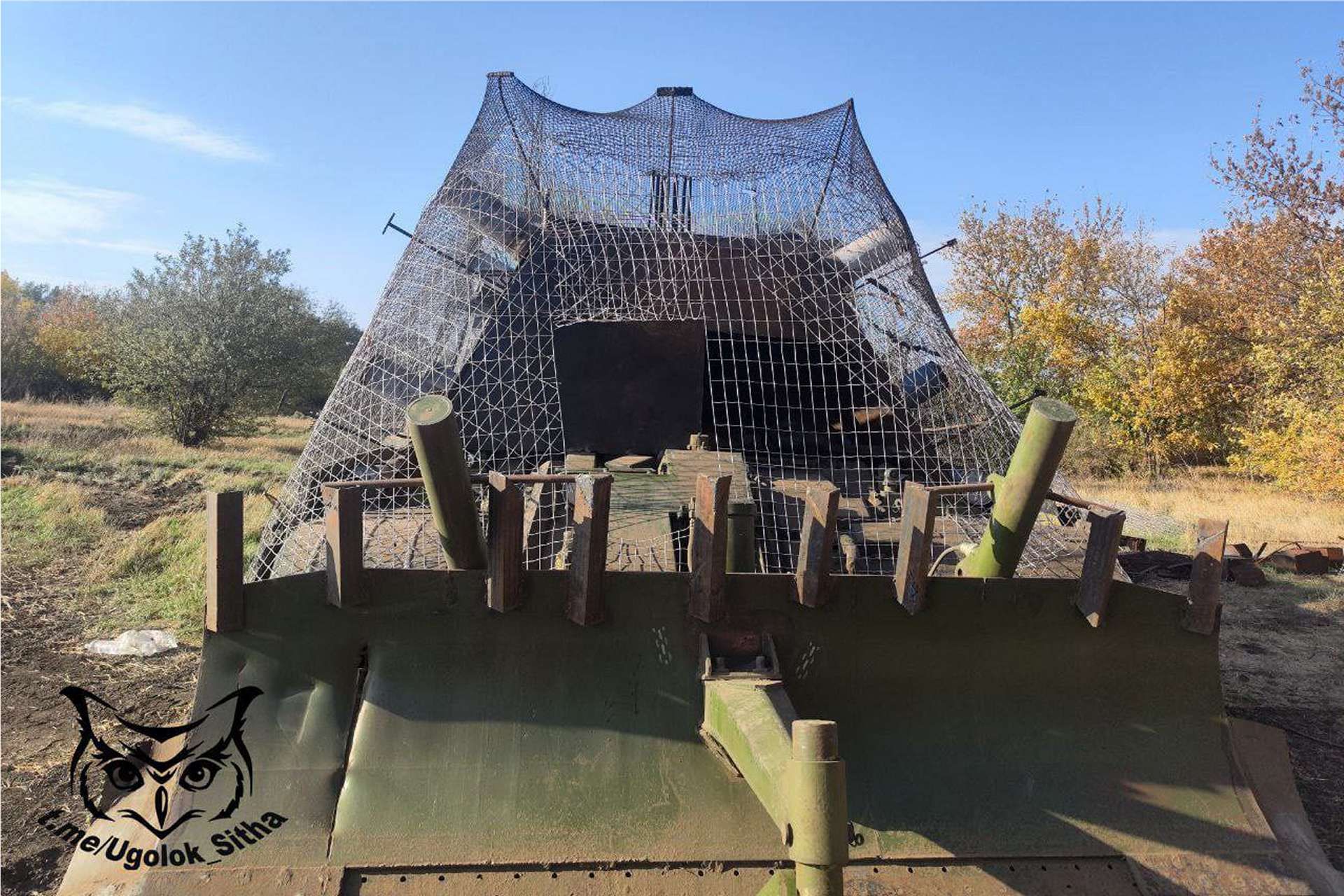Breaking News
Russian Converts T-62M Tank Used in Ukraine Into a Demining Vehicle.
The Russian Armed Forces have recently converted T-62M tanks into demining vehicles. This transformation aims to address the increasing need for mine-clearing on the battlefield, where the use of mines and explosive obstacles has intensified. Initially designed as a main battle tank during the Cold War, the T-62M, modernized over the decades, is now adapted for missions that are no longer strictly offensive but rather dedicated to securing the terrain for Russian troops and vehicles.

The T-62M is a Russian Main Battle Tank. (Picture source: Social Media)
The T-62M, a model from the 1960s, has undergone updates since its inception, particularly in armor and electronics. However, its role as a main battle tank has been gradually overshadowed by newer, more technologically advanced models, such as the T-72 and T-90. In response to this reality, the Russian army has decided to repurpose certain T-62Ms into demining vehicles, an essential function in ground operations confronted with vast minefields, as seen in the ongoing conflict in Ukraine.
These T-62M conversions into demining vehicles may include the addition of demining systems, such as KMT rollers, which neutralize mines by triggering them before the vehicle crosses over. These demining devices, attached to the front of the tanks, create a safe path through minefields, allowing Russian units to advance with reduced risk of material and human losses. In addition, some converted T-62M vehicles receive enhancements to reinforce their armor against landmine explosions, which are often devastating even for heavily armored vehicles.
Using the T-62M as a demining vehicle also reflects logistical constraints and the limitations of modern demining vehicle stocks in Russia. Unlike contemporary models that are more costly and specialized for demining tasks, the T-62M, available in large numbers, offers an economical and functional solution, optimizing available resources for ground support tasks. This choice shows a strategy of adapting existing military resources to the needs of a modern and asymmetric conflict.
However, although the converted T-62M provides an immediate solution, it has limitations in terms of protection and effectiveness compared to modern vehicles specifically designed for demining. Moreover, the increased risk exposure for crews, even with additional armor modifications, underscores Russia's difficulty in quickly mobilizing large quantities of demining solutions.

The Russian Armed Forces have recently converted T-62M tanks into demining vehicles. (Picture source: Social Media)
The T-62M is equipped with versatile armament to engage various types of targets. Its primary weapon is a 115 mm 2A20 smoothbore gun, designed to engage armored vehicles but also adaptable for other ground targets. For support, the T-62M has a 7.62 mm PKT coaxial machine gun, intended to neutralize enemy infantry, and a 12.7 mm DShKM heavy machine gun, mounted for defense against low-altitude aerial threats and close-range ground targets.
The tank features reinforced armor, notably on the front of the hull (120 mm) and turret (242 mm), providing effective protection against small arms fire and shell fragments. This armor, while relatively thick, remains below current standards but still offers protection for the crew against common frontal attacks.
Weighing around 42 tons, the T-62M can reach a maximum speed of 50 km/h, which remains relatively modest compared to more recent tank generations but is sufficient for ground support maneuvers. Its range extends to 450 km, allowing it to cover long distances without frequent refueling, an important asset in extended operations.
The T-62M is equipped with modern observation and targeting systems, including infrared sight, night vision devices, and an NBC (nuclear, biological, and chemical) protection system. It also includes a day/night sight, a fire control system, and a ballistic computer to improve firing accuracy, especially in low-visibility environments.
The tank requires a crew of four to operate: a commander, a driver, a gunner, and a loader. It measures 9.33 meters in length with the gun forward, 6.63 meters in hull length, 3.56 meters in width, and 3.03 meters in height.
The T-62M has been widely exported and is in service in several countries, including Afghanistan, Egypt, Kazakhstan, Iraq, Syria, and, of course, Russia. These users attest to the model's popularity among armies in need of a robust and economical tank, though now outclassed by modern standards in terms of protection and mobility.
The conversion of the T-62M into a demining vehicle by the Russian Armed Forces illustrates a strategy of optimizing available vehicles to meet the demands of an increasingly intense conflict. As mines remain an omnipresent threat on the Ukrainian battlefield, this adaptation of the T-62M highlights the importance of demining capabilities and the ingenuity of the Russian Armed Forces to preserve their mobility and minimize losses.

These T-62M conversions into demining vehicles may include the addition of demining systems, such as KMT rollers, which neutralize mines by triggering them before the vehicle crosses over. (Picture source: Social Media)


























